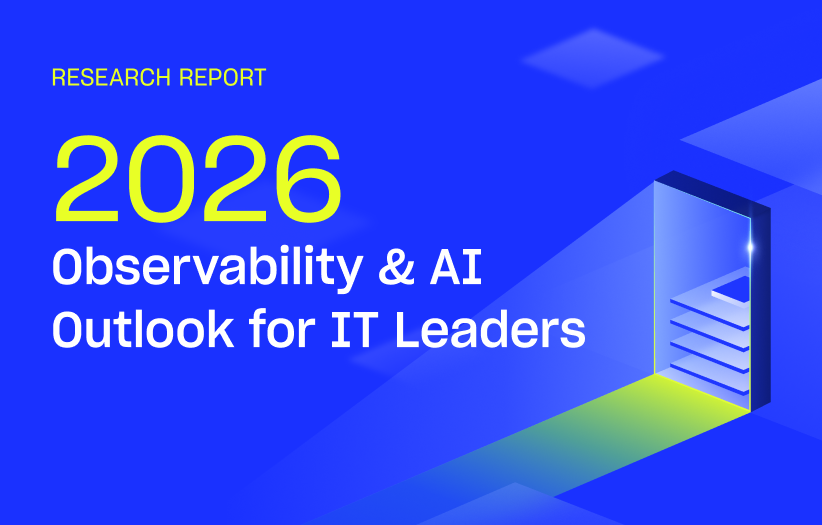From Analyst to Architect: Welcoming Gregg Siegfried as Head of Market Strategy & Competitive Intelligence

LogicMonitor + Catchpoint: Enter the New Era of Autonomous IT

Proactively manage modern hybrid environments with predictive insights, intelligent automation, and full-stack observability.
Explore solutionsExplore our resource library for IT pros. Get expert guides, observability strategies, and real-world insights to power smarter, AI-driven operations.
Explore resources
Our observability platform proactively delivers the insights and automation CIOs need to accelerate innovation.
About LogicMonitor
Get the latest blogs, whitepapers, eGuides, and more straight into your inbox.
Your video will begin shortly
At LogicMonitor, we believe that shaping the future of Agentic AIOps and observability requires more than just powerful technology. It demands bold perspective, deep market insight, and strategic vision. That’s why we’re excited to welcome Gregg Siegfried, former Gartner Vice President and longtime observability analyst, as our new Head of Market Strategy & Competitive Intelligence.
Gregg brings over 30 years of operating and advisory experience to LogicMonitor, including nearly a decade guiding enterprises through complex decisions in monitoring, AIOps, and IT operations. His appointment signals our deepened commitment to delivering insight-driven innovation in an increasingly dynamic market.
We sat down with Gregg to learn more about his move from Gartner back into operating, his take on observability trends, and what excites him about joining LogicMonitor at this pivotal moment.
Gregg: I’m a builder. Most of my career has involved creating or operating software products and services. Gartner is a wonderful place to work, and it absolutely reshaped my approach to technology, but at some point, I realized I missed building. With the industry evolving so rapidly, I realized I wanted to shift from observing change to driving it, and that meant stepping back into an operating role. I began to wonder if I could return to a smaller, more agile environment.
LogicMonitor has exactly the right combination of size, stability, and potential to capture my interest. The team is exceptional. The platform is helping customers not only monitor infrastructure but optimize, automate, and scale it in ways that weren’t possible even a few years ago. When I saw how it’s powering digital transformation for global brands, I knew I wanted to be part of that story. And Christina [Kosmowski, CEO]—well, she can be very convincing, as you probably know.
Gregg: Agentic AI probably fits both categories. AI has moved incredibly fast, and it’s hard not to be impressed by what LLMs are already enabling. But hype can outpace reality. I’m also closely watching OpenTelemetry’s momentum—adoption is accelerating, and its stability has improved dramatically.
More broadly, I’m excited by how observability is expanding to touch things like incident response and progressive delivery. I’ve long been a proponent of autonomous IT operations, and it’s finally starting to feel within reach, assuming we can move beyond rule-based AI systems to agent-first ones that can take action. Also, of course, we have to have that unified data context to bring the telemetry and observability dataset together with external ITOps context to power a unified knowledge graph. This does require a level of collaboration across the vendor ecosystem that’s incredibly diverse right now—there’s something for everyone.
Gregg: Ask me again in a few months! But seriously, my experience leading Magic Quadrants taught me how to filter overwhelming volumes of input—vendors, clients, noise—and zero in on what really matters to customers looking to achieve outcomes for their organizations. Sometimes, what isn’t being talked about is more important than what is.
I’m especially excited that there’s such strong internal AI adoption at LogicMonitor, stemming from the OpenAI collaboration. These days, it’s not that we have too little data—we often have too much. Partnering with teams across Sales, Product, Engineering, and Marketing will be essential to ensure we’re always reading the right signals.
Gregg: The future of telemetry acquisition is open source—and right now, that means OpenTelemetry. Robust OTel support is already “table stakes.” Differentiation in this space is shifting toward analysis, insights, and automation.
eBPF is fascinating. It enables safe code execution in the Linux kernel and powers some slick instrumentation use cases. For example, some tools can now auto-instrument applications without touching the code—collecting traces, logs, and metrics directly from the kernel.
And with AI, it’s a double-edged sword. Observability platforms will increasingly depend on AI for anomaly detection, adaptive thresholds, and GenAI-based insights. And the future lies with agentic AIOps. But at the same time, we also need to be thinking about how we observe AI and agents. LLM-based apps can seem healthy by traditional metrics but deliver nonsense due to hallucinations or drift—a nontrivial observability challenge.
Gregg: Simplify. Rationalize. Most teams don’t need 10 or 20 monitoring tools anymore. And having all these tools will only slow you down more as the IT environment gets more complex. Today’s platforms are powerful—the challenge is understanding how your systems interact. Reducing tool sprawl makes those relationships much clearer. That’s where resilience lives.
Gregg: My family, absolutely. I’ve spent the last decade living in a forest, and nature’s constant change is incredibly grounding. I recharge through music—playing, listening, traveling to shows. I also volunteered as an EMT for years. That work puts “IT emergencies” into perspective pretty quickly.
Gregg’s arrival comes at a transformational moment—not just for LogicMonitor, but for the entire observability category. As we invest in AI-powered insight, open standards like OpenTelemetry, and platform-wide simplification, Gregg will be instrumental in ensuring our strategy stays sharp, differentiated, and customer-led.
We’re thrilled to welcome him to the team.
👉 Connect with Gregg on LinkedIn
📢 Stay tuned for more from Gregg in upcoming analyst and industry briefings.
© LogicMonitor 2026 | All rights reserved. | All trademarks, trade names, service marks, and logos referenced herein belong to their respective companies.
